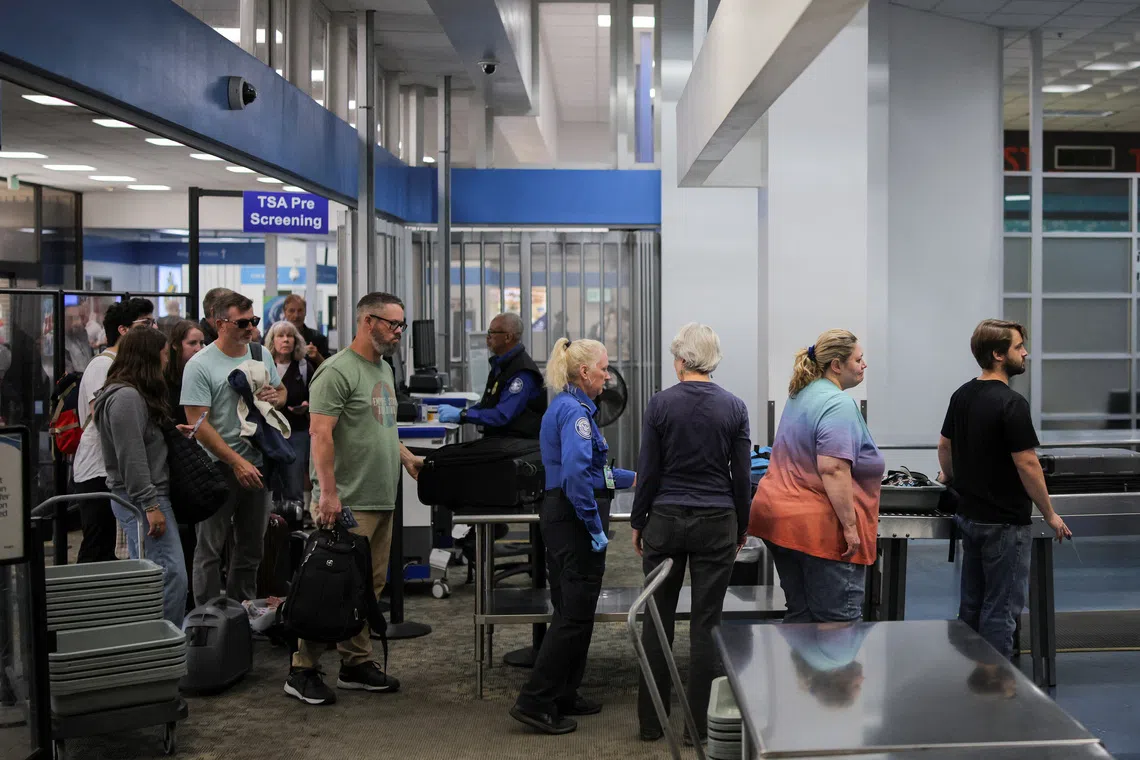US expands facial recognition at borders to track non-citizens
Sign up now: Get ST's newsletters delivered to your inbox

Travellers passing through security screening at Hollywood Burbank Airport, in Burbank, California, on Oct 1.
PHOTO: REUTERS
Follow topic:
- US to expand facial recognition on non-citizens entering/leaving to combat visa overstays and fraud, effective December 26th.
- Regulation allows photographing non-citizens at all entry/exit points; biometrics like fingerprints/DNA may also be required.
- The system raises concerns about privacy and misidentification, particularly of black people and other minority groups.
AI generated
WASHINGTON - The US will expand the use of facial recognition technology to track non-citizens entering and leaving the country in order to combat visa overstays and passport fraud, according to a government document published on Oct 24.
A new regulation will allow US border authorities to require non-citizens to be photographed at airports, seaports, land crossings and any other point of departure, expanding on an earlier pilot programme.
Under the regulation, set to take effect on Dec 26, US authorities could require the submission of other biometrics, such as fingerprints or DNA, it said.
It also allows border authorities to use facial recognition for children under age 14 and elderly people over age 79, groups that are currently exempted.
The tighter border rules reflect a broader effort by US President Donald Trump to crack down on illegal immigration.
While the Republican president has surged resources to secure the US-Mexico border, he has also taken steps to reduce the number of people overstaying their visas.
The growing use of facial recognition in US airports has raised privacy concerns from watchdog groups worried about overreach and mistakes. A 2024 report by the US Commission on Civil Rights said tests had shown facial recognition was more likely to misidentify black people and other minority groups.
The Congressional Research Service estimated in 2023 that some 42 per cent of the 11 million immigrants in the US illegally at the time had overstayed a visa.
The US Congress in 1996 passed a law mandating the creation of an automated entry-exit system, but it has never been fully implemented.
US Customs and Border Protection already uses facial recognition for all commercial air entries but only employs it to record exits at certain locations, the regulation said.
CBP estimates that a biometric entry-exit system can be fully implemented at all commercial airports and seaports for both entry and exit within the next three to five years. REUTERS

